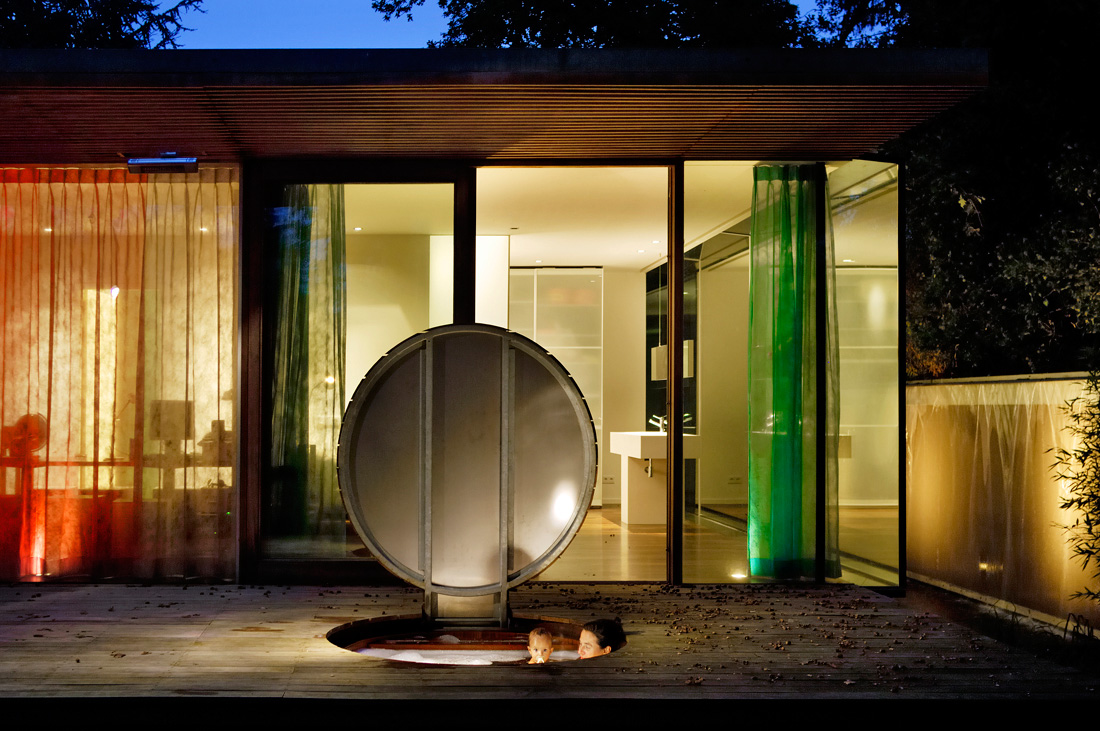
The woods around the villa are dark, which means it is important to ensure that as much light can enter the house as possible. However, the more glass is used in a building, the more difficult it is to maintain the dividing line between inside and outside, private and public. Therefore the building plot is divided into three long strips at right angles to the road. The bottom and southernmost strip is reserved for the garden, the middle strip contains the villa itself and the most northern strip offers access to the house: this is where the drive, parking space and the entrance are located. This layout of the site means that those parts of the house that the residents prefer to keep private are out of sight.
To create openness and lightness and tot give the residents the feeling living outside in the green, the house is entirely oriented to the secluded garden at the south. Every room in the villa looks directly out on to this garden, because three of the four façades are made of glass.
The spacious wooden terrace forms a room outdoors, partly covered by a wooden awning supported by steel brackets that taper upwards. This gives it the appearance of floating above the ground. Ponds have been laid on both sides of the villa, so that the house here, too, appears to be raised above ground level, emphasising the lightness of the building.
Dutch Villa Berkel Netherlands by Paul de Ruiter
No comments:
Post a Comment